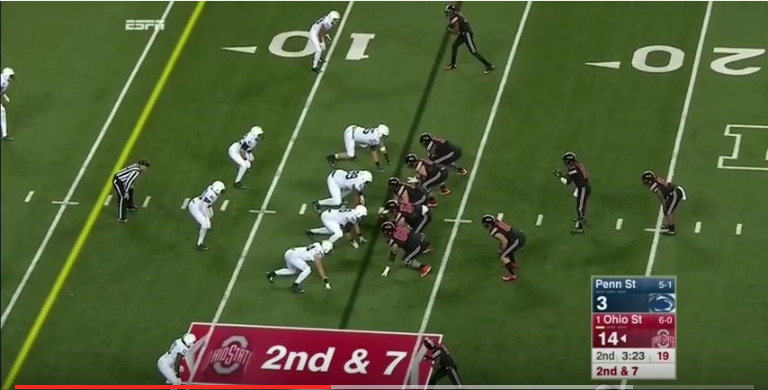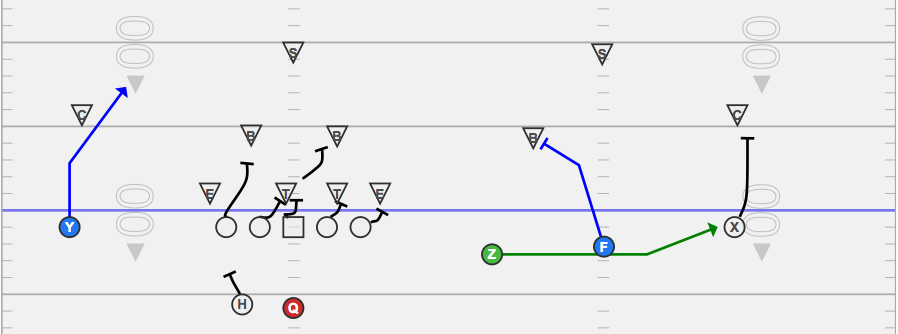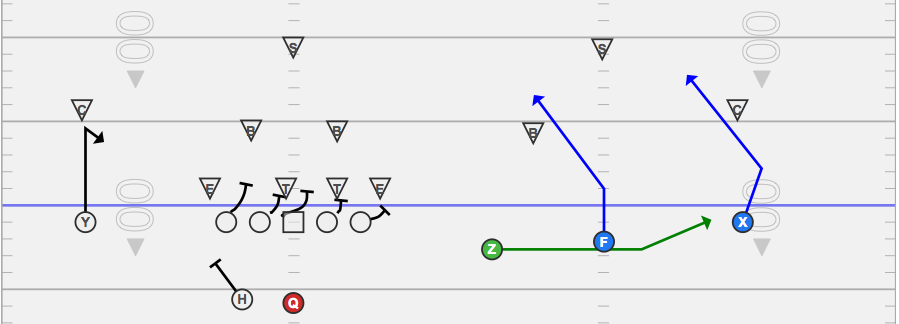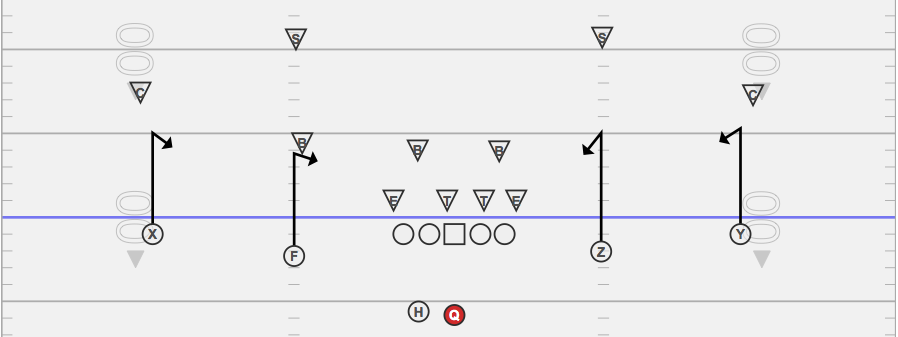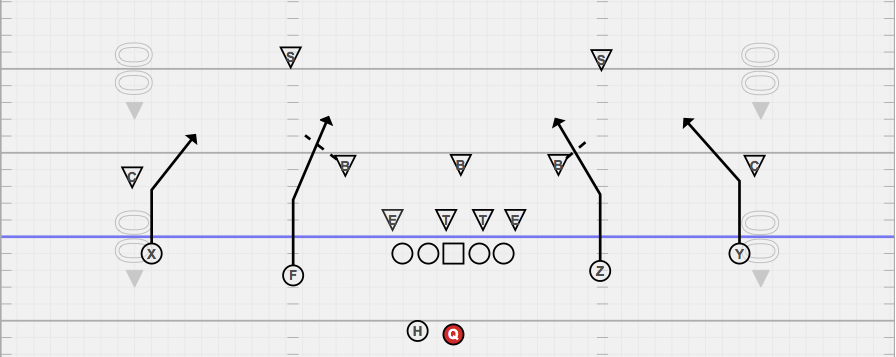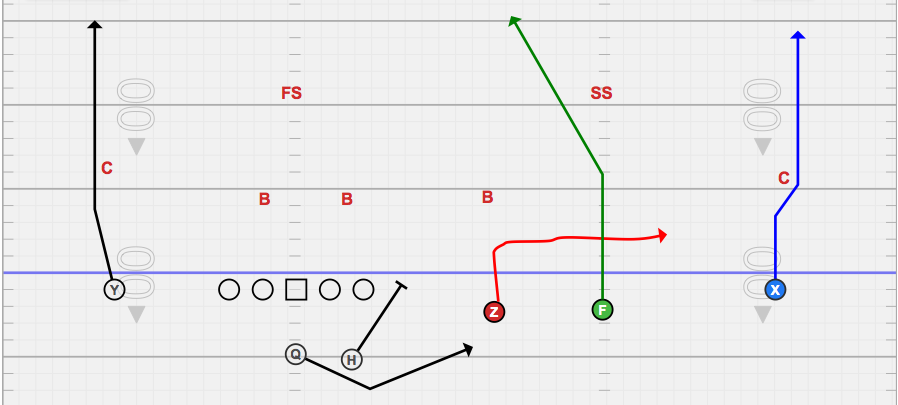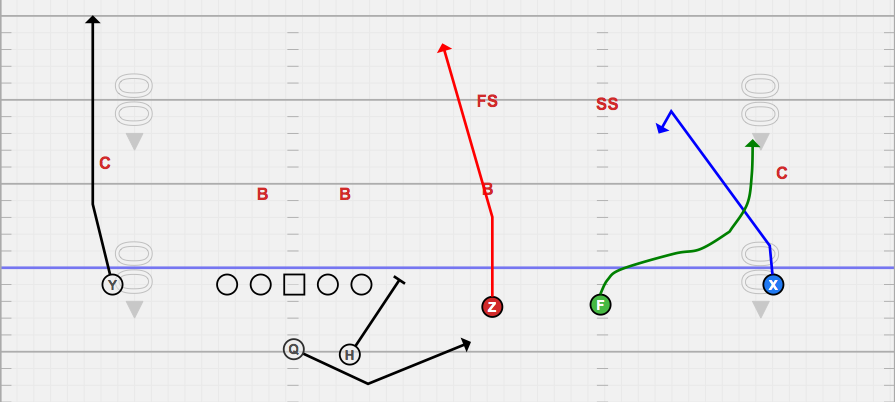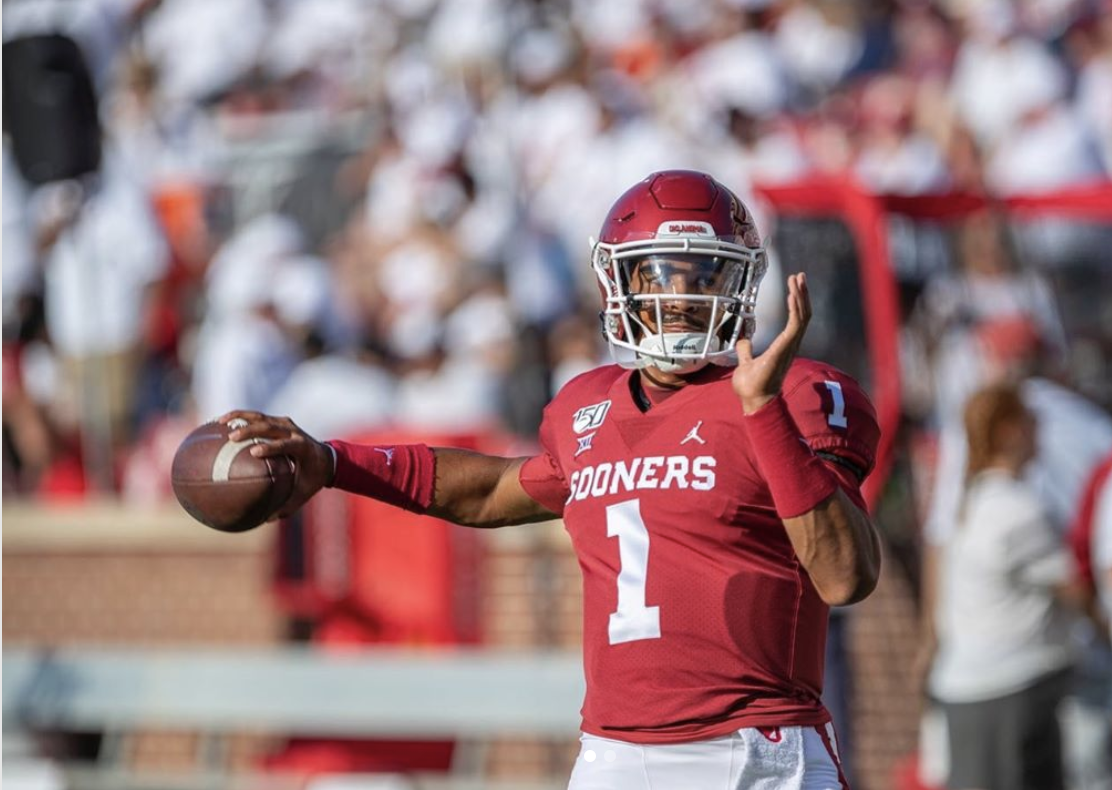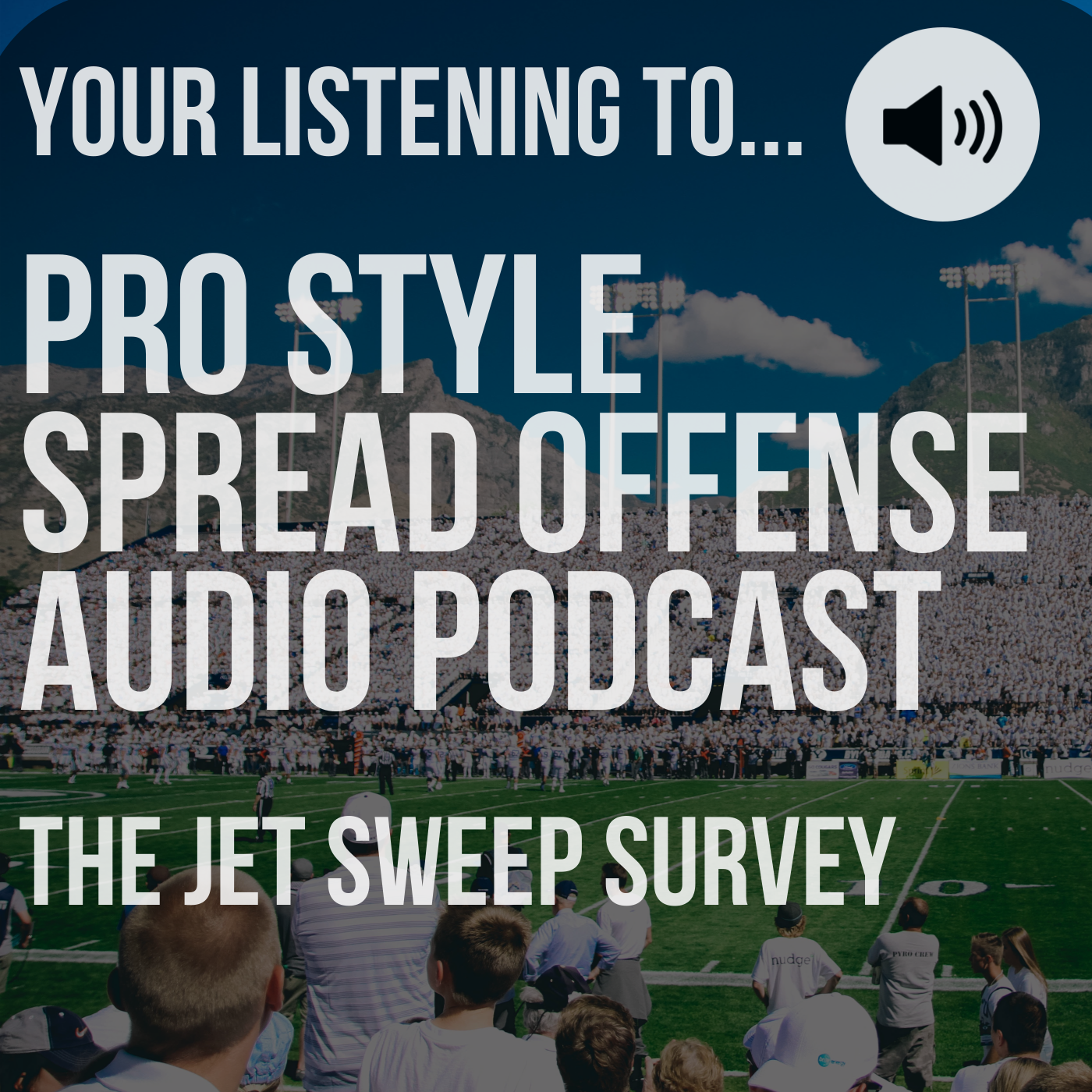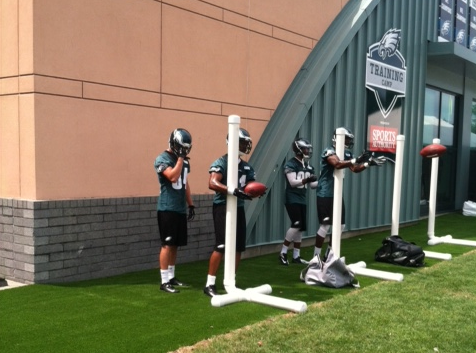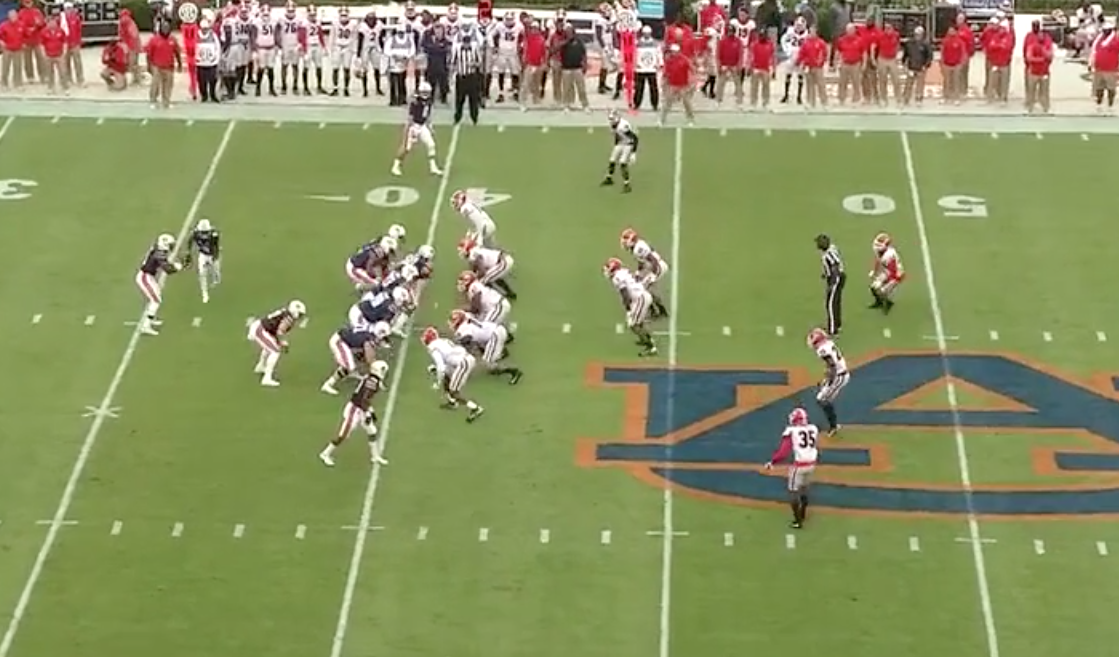Ever hear someone tell you that running spread football plays was not viable if you don’t have the players? I’ve heard it many times. But what exactly does that mean? Most people are referring to the QB and Receiver positions. I think they believe that spread football plays need D1 type QB’s who can run and throw to a couple of D1 type receivers. I get that because there are those teams out there. And if you have those players, you should be able to make it work!
Most of us aren’t that fortunate however. And even if we are (or sell our souls to get somebody like that in the program) it’s hard to count on players like that filling your roster season after season. Or worse yet, you put all you eggs in the spread game basket and then your star QB gets hurt. Do you have a backup plan for what happens next?
Offensive System Paralysis
This is why many coaches pick an offensive system that doesn’t depend as heavily on great talent year after year at these positions. Makes sense for them, right?
The point of this article is to hopefully get coaches to consider that some spread football plays don’t have to be as much of an open or shut door. To be a good team offensively, you have to throw the ball effectively. Really good teams that specialize in running the ball are still very effective in their passing game which keeps defenses honest. Spread football plays can help a team achieve this even if they are not a spread offense at their core.
Rationale For More Spread Football Plays
My proposal: That every system should have some spread football plays they use frequently. Here’s why.
- It’s simple. Whether it’s introducing a couple of new formations or just taking your existing formations and spreading them out. You can stay under center if that’s what your regular offense does. Teams can start running spread football plays within their core offense in one day. You don’t need a lot of plays. You just need the right ones.
- It can help you win games. Some teams on your schedule will not be able to defend spread football plays properly. Trying to teach pass defense and defending in space is a tricky thing to youth and High School players. If you need to move the ball quickly downfield while minimizing time of possession, the spread plays also make a great 2-minute offense.
- It’s fun. I know, I know. It may not be your favorite style, but when you tell your team that you have a package of spread football plays, they will love it!
In the following series of spread football plays, I’m confident that you will find some that will work with your team. They fall into three different categories.
Bubble Screen
In this first package, you need just two plays to be effective. A simple bubble screen and a bubble slant pass. My favorite play here is the Bubble Screen. You can get a ton of mileage off of running this to the three-receiver side of a formation. The play is to quickly pass the ball out to the #3 receiver running a bubble swing route. This can be executed either under center or from the shotgun. I prefer shotgun because of the lower likelihood that the pass will be backward and a live ball if dropped. I only call the play when we have a numbers advantage against our trips formation. That means that there are only two, linebacker level defenders over our three receivers/backs. The emphasis of the play is on maintaining their blocks so the receiver can run around the defense to the outside.
Bubble Slant
The Bubble Slant is used when you see linebackers cheating when they read the bubble route. The QB’s progression is to watch the LB and throw first to the #2 receiver when the LB clears. If that is not available, the QB will then progress to the #1 receiver also running a slant, but wider on the release. If neither is open, the QB can either throw it away, or run the ball.
I also offer a great free resource for teams who want to run the Bubble Screen. It’s called “5 Steps to an Awesome Bubble Screen.”
All Hitches
This second package of spread plays takes immediate advantage of teams whose secondary are playing too soft or not being covered at all. I like running this one out of the 2 x 2 spread formation, but it is also very effective for teams that like to blitz a LB from the trips side of a 3 x 1 formation. The first play is called “All Hitches.” Every receiver runs a 3-step Hitch route where they really drive off in their first three steps making it look like they are running a Go route. When they break down and turn inside to the Quarterback they want to make sure they have position between the defender and the ball. After catching it, they should always turn outside to get as many yards after the catch as possible. I have seen this play go for a score simply because the defender didn’t protect from the outside in. The QB read is a one step drop from shotgun (three steps from under center) and immediate throw to the closest – softest covered defender. To make things simpler, have the QB pick the best-looking side pre-snap. He is looking for softer defenders or maybe a LB who is cheating too far inside or outside that one of the routes will likely be wide open. In the diagram below, the QB should progress first from the Z to the Y to either running the ball or throwing it away.
All Slants
A second quick pass play that can be a very good play against a Cover 2 look is “All Slants.” The slant route by the F and Z should be very skinny. Essentially they are looking to just scrape inside their defender and work up field after three hard steps vertical. This keeps them from getting too close inside where the Middle Linebacker can make a play. The Y and X can run a regular straight slant that cuts at a 45-degree angle inside. They should settle a bit in the window between the Corner and Safety. The QB can first pick a side that looks better pre snap. Then his progression is again from the inside receiver to the outside receiver. If the first option is covered or collisioned, then he must quickly go to the second option and finally throw it away or run it.
Sprint Out Pass Game
This third package of plays is one of my favorites because it is simple to run and execute. I prefer the sprint out passing game to the trips side of the 3 x 1 receiver formation for the additional space given and the ability to involve three receivers directly.
The first play is a “Go” concept taken from the Run and Shoot family. The #1 receiver runs a Go route. The #2 receiver runs a Post or Seam and the #3 receiver runs a one step Out route. The Quarterback pre-snap needs to identify which defenders are lined up over the top of the Post and the Go route. In this case, the SS most likely covers the F and the C most likely covers the X. Even so, after the snap the Quarterback should look to the F and X in his first three steps to verify this is happening. That way, if coverage is blown, he will see it and throw to the wide-open downfield target. After quickly checking F and X, the next receiver in the progression is the Z. This is an easy target with the Quarterback moving outside of the pocket in the same direction as the Z. If the Z is not open then the QB should look to run the ball or throw it away if he cannot get outside.
Wheel Route Concept
My absolute favorite play from the sprint out package is the classic wheel route. At every level I have coached, this route has been successful. There are a few things I have modified with different teams to help make it more successful.
The #1 receiver runs a curl route from 12yd back to 10yd. It helps to have this route angle inside closer to the Seam/Curl defensive zone. The reason for this is it brings inside the defenses widest defender giving more room for the curl.
The #2 receiver lines up on the hash and runs the wheel route. I tell him to break outside on the second step into a speed cut toward the sideline. Then on the 5th step he should again speed cut up field around any defenders up the sideline. He has to run it aggressively and get up field quickly – make sure your best receiver is on the wheel route. This is usually a once a game play call where I am looking for a big play so I tell the QB to sprint out deeper and get his feet set. If no one is sitting deep over the top, I want him to throw it between the sideline and receiver so we can fade outside to get it. There has to be some air under the ball and it cannot be a line drive throw.
The #3 defender can either run a post to help hold the Safety or sometimes I bring him in to a wing to be an extra blocker to make sure we get the ball out without being pressured. If someone is sitting over the wheel he can check back to the Post and finally the Curl. The Curl route should look to widen after his break and escape from any defenders. If nothing is clear, the Quarterback can run or throw it away.
While your spread formations may not look exactly the same, these plays can be easily adapted to both two and three receiver spread formations that do fit your offense. If you do one thing next, take look at your playbook and determine if any of these packages of plays can work with your offense.

